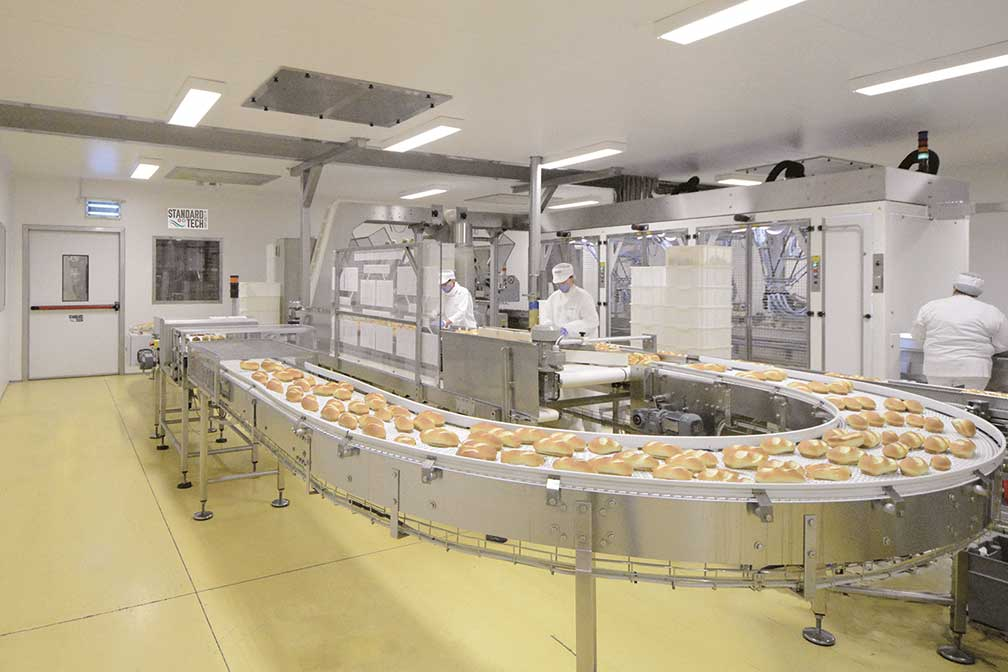
When building or upgrading a food packaging facility, choosing between ISO 7 and ISO 8 cleanrooms is a critical decision. While both offer controlled environments, they vary in particle limits, construction cost, and regulatory expectations.
In this article, we’ll break down what each cleanroom class means, how they apply to food packaging, and how to choose the right one based on your needs and risk level.
What Are ISO 7 and ISO 8 Cleanrooms?
Cleanrooms are classified by the number of particles allowed per cubic meter of air, based on ISO 14644-1 standards.
| Cleanroom Class | Max Particle Count (≥0.5μm) | Typical Industries |
|---|---|---|
| ISO 7 | 352,000 particles / m³ | Pharmaceuticals, high-end food packaging |
| ISO 8 | 3,520,000 particles / m³ | General food packaging, cosmetics |
ISO 7 offers stricter air cleanliness than ISO 8, requiring more advanced HEPA filtration, air changes, and gowning protocols.
Why Cleanrooms Are Used in Food Packaging
In food packaging, cleanrooms help:
Prevent microbial and particulate contamination
Extend shelf life of products
Meet standards like GMP, FSMA, FSSC 22000
Ensure consumer safety and brand reputation
While cleanroom use isn’t legally required for all food production, it’s recommended for high-risk products, such as:
Ready-to-eat (RTE) meals
Baby food
Protein powders
Dairy-based snacks
ISO 7 vs ISO 8 – Key Differences for Food Applications
| Feature | ISO 7 | ISO 8 |
|---|---|---|
| Particle Control | Tighter (10x cleaner than ISO 8) | Acceptable for low-risk packaging |
| Air Changes per Hour (ACH) | Typically 60–90 | Typically 20–30 |
| Construction & HVAC Cost | Higher (complex airflow, HEPA zones) | Moderate |
| Gowning Protocol | Full gowning + gloves + booties | Lab coats + hair nets |
| Application Examples | Aseptic packaging, probiotic foods | Dry food filling, snack packaging |
| Certification Expectations | Often audited for GMP compliance | Meets hygiene standards |
How to Choose the Right One
Ask these key questions:
What’s the contamination risk level of your product?
If airborne bacteria, dust, or particles may compromise safety or shelf life → ISO 7 is safer.Is your product directly exposed during packaging?
Products with open filling systems (no sealed barrier) benefit more from ISO 7.Are you preparing for international food audits or export?
Global buyers often require ISO 7 or better, especially in pharmaceutical-grade food sectors.What’s your budget and ROI timeline?
ISO 7 may have higher initial costs but lower recall risk, fewer QA failures, and longer product life.
Real-Life Scenarios
A baby formula manufacturer chose ISO 7 to prevent Salmonella and maintain export compliance.
A protein bar producer opted for ISO 8 with positive pressure to cut costs while meeting hygiene standards.
Final Verdict: Go ISO 7 If…
Your product is moist, organic, or protein-rich
You sell to strict markets (e.g., EU, Japan, pharma-channel)
You need maximum protection against recalls or contamination
Otherwise, ISO 8 may be sufficient for dry snacks, powders, or secondary packaging—as long as personnel training and airflow design are well implemented.

